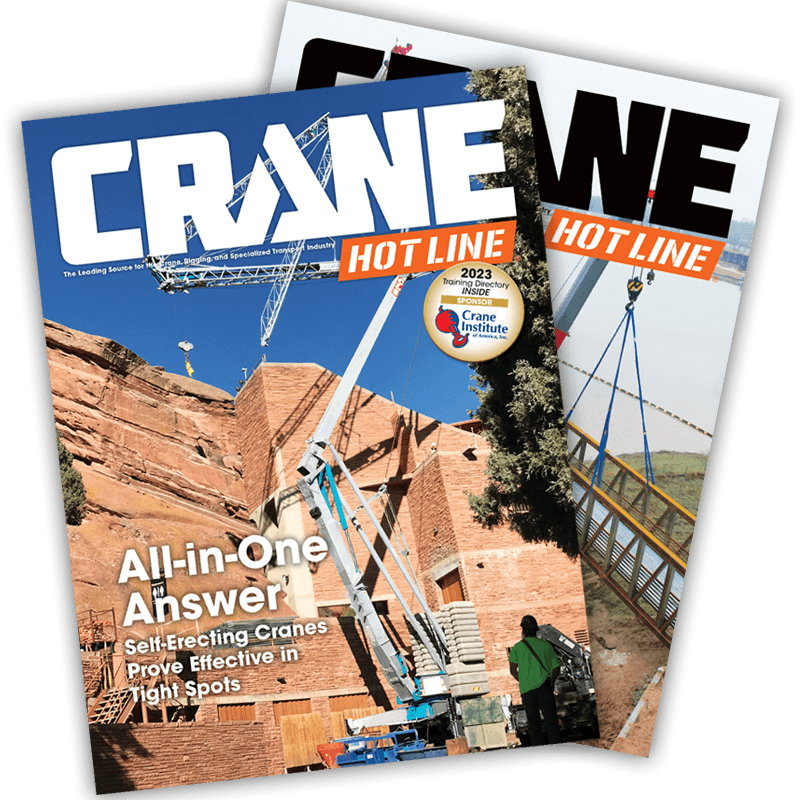Standout Scissor
Enlarge Image
MEC Aerial Work Platform,

MEC showed off its 1932ES scissor model at the Showcase.
On the company’s 19-foot scissor offering, the 1932ES, MEC employs square-tube guardrails, a punch-pressed platform floor, and a roll-out deck with six incremental locking positions. The deck deploys on four different poly rollers: two up front and two in the mid
Enlarge Image
dle of the deck. Rollers are housed on the deck in a 1/2-inch enclosed channel on either side. If debris falls in the platform, the enclosed roller path helps prevent it from getting caught underneath the wheels. If debris happens to migrate into the channel, it falls out through release holes in the front when the deck is rolled back in. On the side of the platform, the deck and toe board are one piece. This prevents the buildup of debris between the two pieces, which can hold moisture, thus reducing the chance of rust from developing.

Deck rollers and track are completely on the inside of the platform.
MEC 1932ES Showcase Presentation
The uniquely designed all-steel upper control box can be tilted for different height operators and moved anywhere on the right side of the machine. MEC does not use computers, electronic components, or relays in the control system. At the base of the upper control box, a 2-inch strain relief is located to encapsulate the housing at the insulated portion instead of the terminal. If it is tugged or pulled on, it is not going to hurt the control box. A terminal stop is located underneath the platform where every wire for the control cable is bulk-headed. These are numbered for troubleshooting.

Enlarge Image
Control box can be adjusted to fit worker height.
MEC uses a patented single-beam scissor linkage on its 1932ES. The company believes this unique feature minimizes deflection. Specifically MEC believes that reducing the number of pivots points, fixing one end of the linkage pin to the beam, and line boring every bushing after it has been welded into the scissor beam adds to the unit’s rigidity. The company also uses large 1-7/8-inch pins to get more bearing surface. These hardened chrome pins ride on Teflon bearings to eliminate maintenance on the scissor stack.
 |
| Enlarge Image The unique single-beam scissor stack is designed to improve rigidity. |
For the lifting mechanism, MEC uses a non-displacement cylinder that has a sealing mechanism at the end of the cylinder housing. According to the company, it has bolted a piston at the end of the rod located inside the lower section of the cylinder. As the oil flows in, it immediately pressurizes the housing and displaces the rod. Not only does this keep oil from seeping out, but it also enhances the 1932ES’s elevation speed. If the piston ever starts to seep, a backup seal at the boom forces the oil to return to the hydraulic tank.
MEC has a 5° incline limit, and the tilt sensor activates at 2° fore and aft and 3° side to side. The lower control housing protects the tilt sensor from outside debris that may fall on the machine. According to MEC, the most complex part of the control system is the proven Sevcon motor control, which manages the speed of the electric motor in relation to the speed of the joystick. “The idea is you don’t need a laptop or analyzer,†says Jim Tolle of MEC. “All you really need is a test light to fix these machines.â€
To extend service life, all hydraulic hoses in contact with metal are encased with a hardened plastic spiral wrap or steel coil to prevent chafing. To protect connections from steam cleaning or pressure washing and prevent condensation, every
Enlarge Image
connection is either a watertight Deutsch connector plugged straight into the valve coil, or if it is an internal connection inside the control box, it is a hand-style hard-wired connector.

Hose chafing is controlled with consistent use of poly wrap.
On the “flex-free†rigid chassis, the 1932ES does not h ave swing-out or pull-out trays. Instead, the single door swings up or the covers pull off to completely to expose the batteries. Powering the unit are four 220 amp-hour, six-volt batteries with 245 amp-hour batteries available as an option. If the batteries become drained to a level of about 14 volts, lift is cut out to let the operator know the batteries are low. At 10 volts, the machin e completely shuts down, protecting the components. The universal charger is designed so it will turn on even if the power source is less than ideal.
The pothole protection system is mechanical. Limit switches detect the position of
Enlarge Image
the pothole bars. If the pothole bar is not allowed to fully deploy, the interlock shuts the machine’s lift and drive functions. Although this unit features hydraulically driven 90-degree pivot steering, note in the image that they use a smaller profile White Hydraulic supplied motor. These shallow motors mean that there is no protrusion past the front of the unit when the wheels are fully turned.

Drive motors stay inside the leading edge of the machine.
The MEC 1932ES features a powder-coat finish. Options on the machine include an inverter, swing gate, folding guardrail systems, and lanyard attachments.
Lift and Access perspective: One of MEC’s competitors commented at the event that this unit was a great value proposition and it is easy to see why he felt th at way. The fit and finish are exceptional and there really isn’t much not to like. The guys at MEC are self proclaimed “gear heads†and that is evident in the way this
Enlarge Image
unit is put together. Heavy-duty switching circuits and over-specified hoses and wiring are utilized plentifully. The MEC was also a standout performer with the fastest lift and lower speeds and quick travel time, all translating into a very productive machine. About the only issue that we could see was with the routing of one of the lift mechanism’s hydraulic hoses. As you can see in image at left, while the hose is sheaved in a wire casing, it will rub the paint off that first-class paint job. This isn’t a design flaw and can be simply rectified with some adjustments.

Hose and wire sheave routing a minor issue.
To download a complete set of factory specifications, visit the MEC website.


